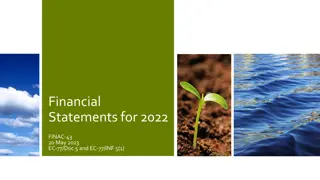
Nursing Oral Medication Administration Guidelines
Learn about the fundamental aspects of administering oral medications in nursing practice, including indications, contraindications, purposes, assessment considerations, and alternative administration routes like nasogastric and gastrostomy tubes.
Download Presentation

Please find below an Image/Link to download the presentation.
The content on the website is provided AS IS for your information and personal use only. It may not be sold, licensed, or shared on other websites without obtaining consent from the author. If you encounter any issues during the download, it is possible that the publisher has removed the file from their server.
You are allowed to download the files provided on this website for personal or commercial use, subject to the condition that they are used lawfully. All files are the property of their respective owners.
The content on the website is provided AS IS for your information and personal use only. It may not be sold, licensed, or shared on other websites without obtaining consent from the author.
E N D
Presentation Transcript
Fundamental of Nursing Oral Medication Lec: 2 Dr. Hayder I. Ali
Oral Medications The oral route is the most common route by which medications are given. This route choice when: 1. Aclient can swallow. 2. Retain the drug in the stomach.
Contraindications of Oral medications are: Oral medications are contraindicated when 1. Client is vomiting. 2. Has gastric or intestinal suction. 3. Unconscious and unable to swallow. Nil per os (NPO) = nothing by mouth
Purpose of administering the oral Medications: To provide a medication that has systemic effects or local effects on the GI tract or both.
When Administering Oral Medications the nurse need to Assess: 1. Allergies to medication(s). 2. Client s ability to swallow the medication. 3. Presence of vomiting or diarrhea that would interfere with the ability to absorb the medication. 4. Specific drug action, side effects, interactions, and adverse reactions. 5. Client s knowledge of and learning needs about the medication.
NASOGASTRIC AND GASTROSTOMY MEDICATIONS For clients who cannot take anything by mouth (NPO) and have a nasogastric tube or a gastrostomy tube in place, an alternative route for administering medications is through the nasogastric or gastrostomy tube.

















